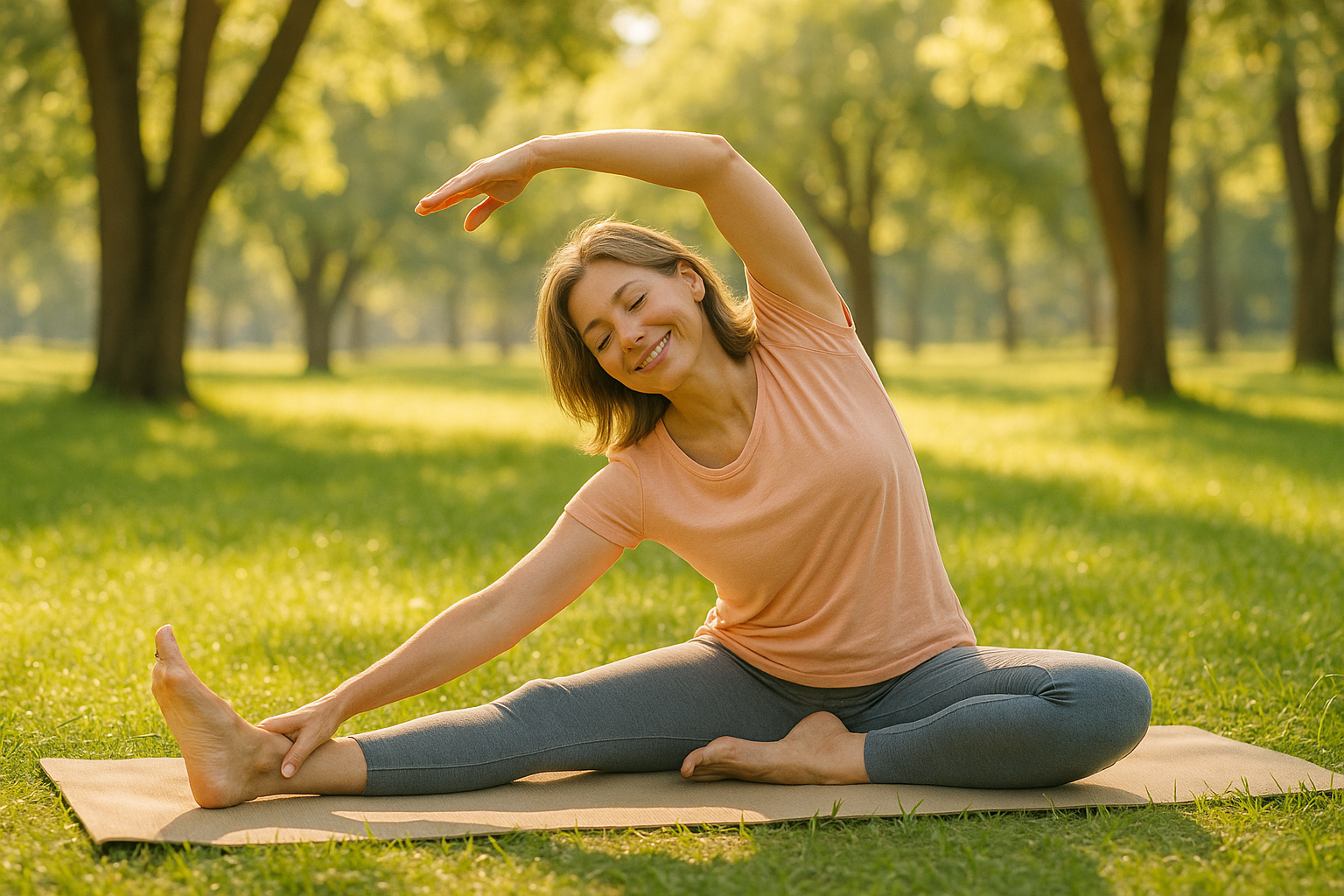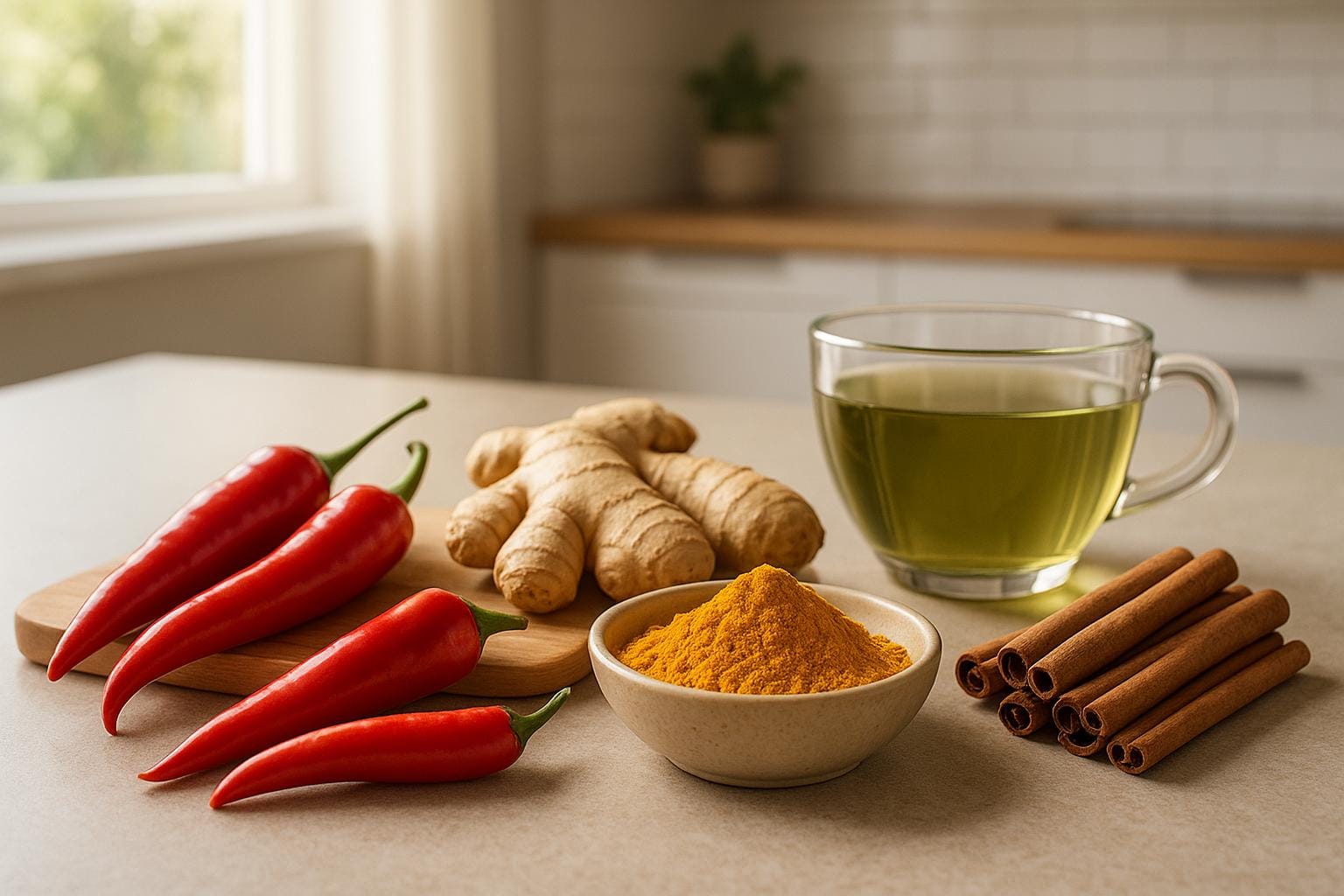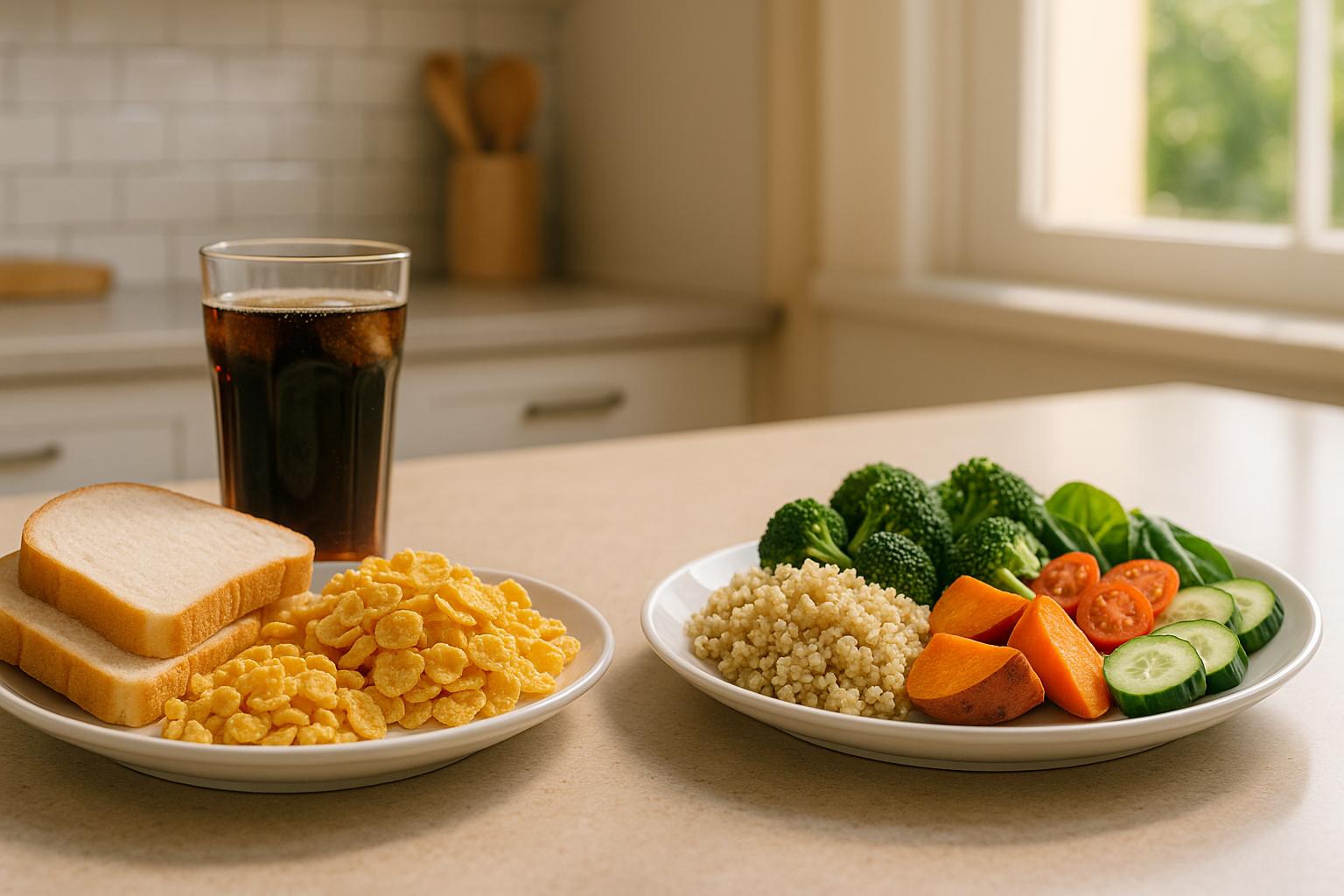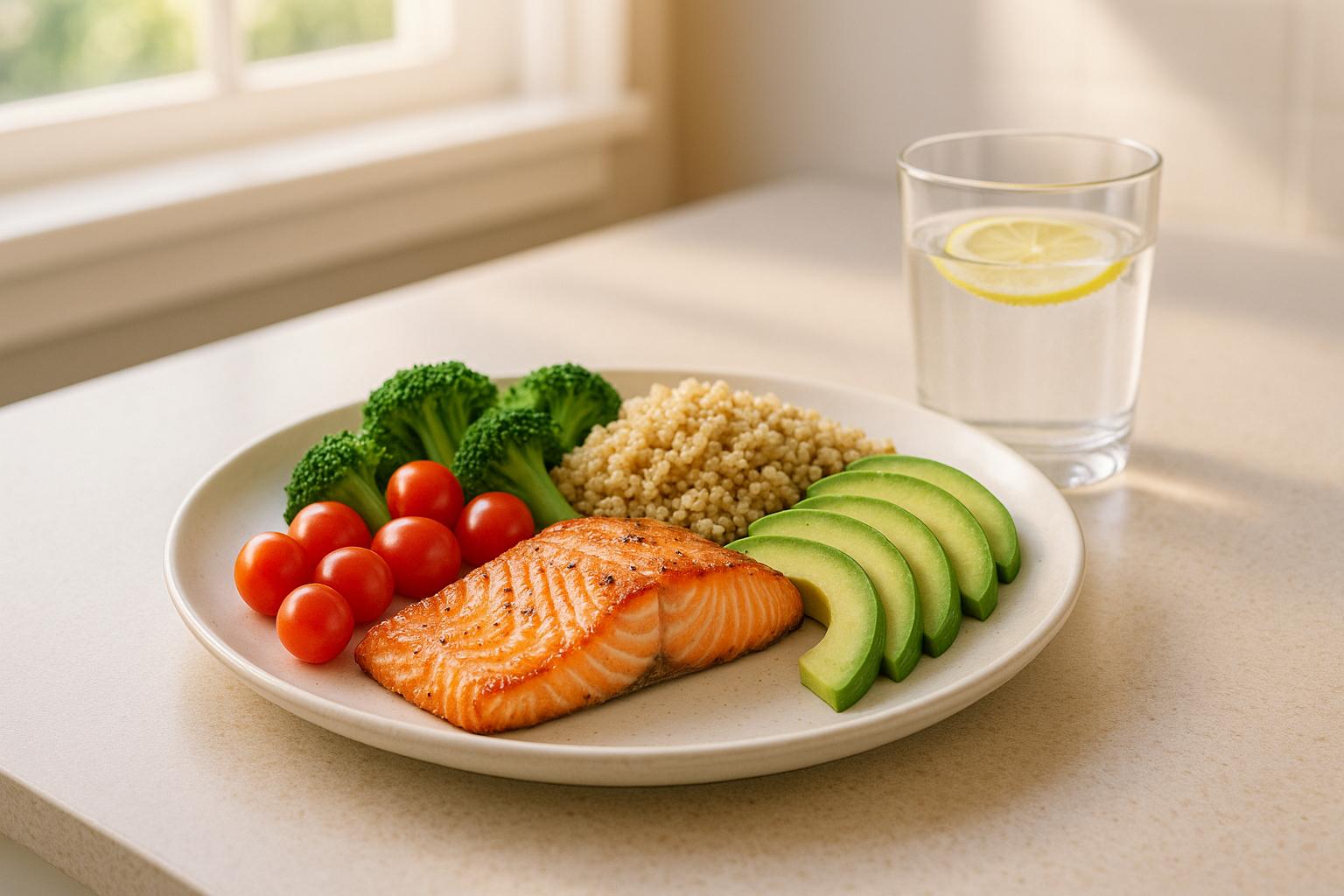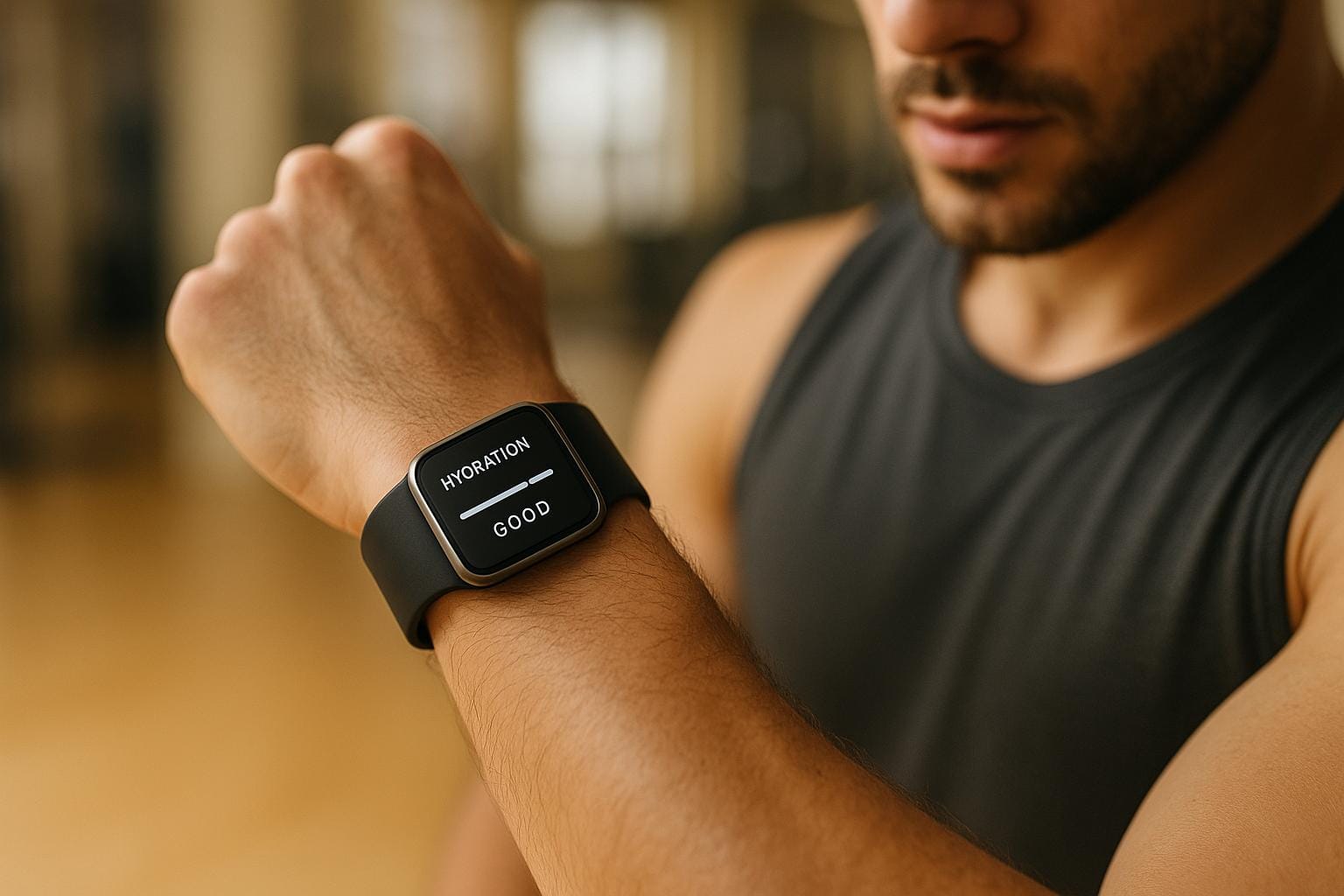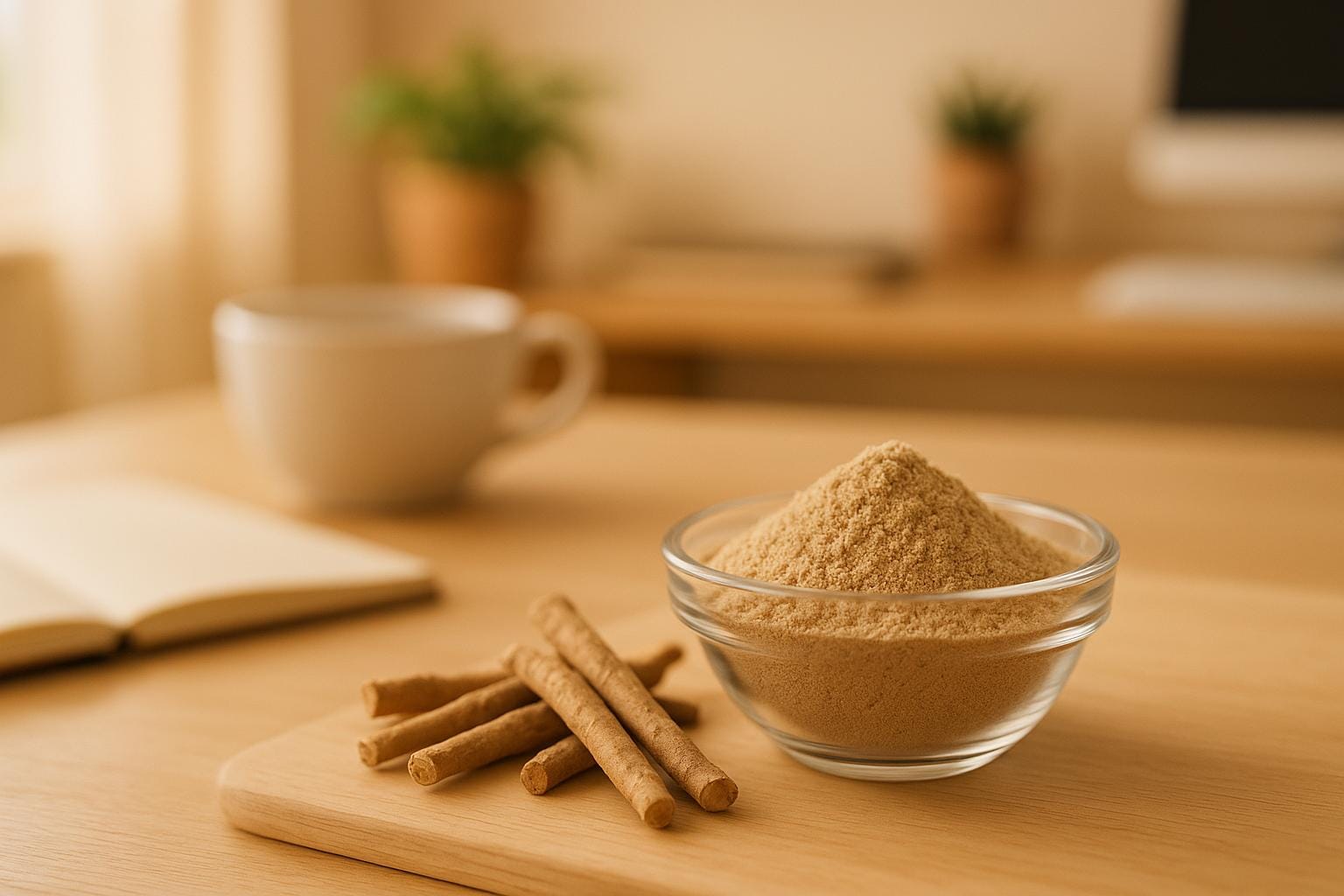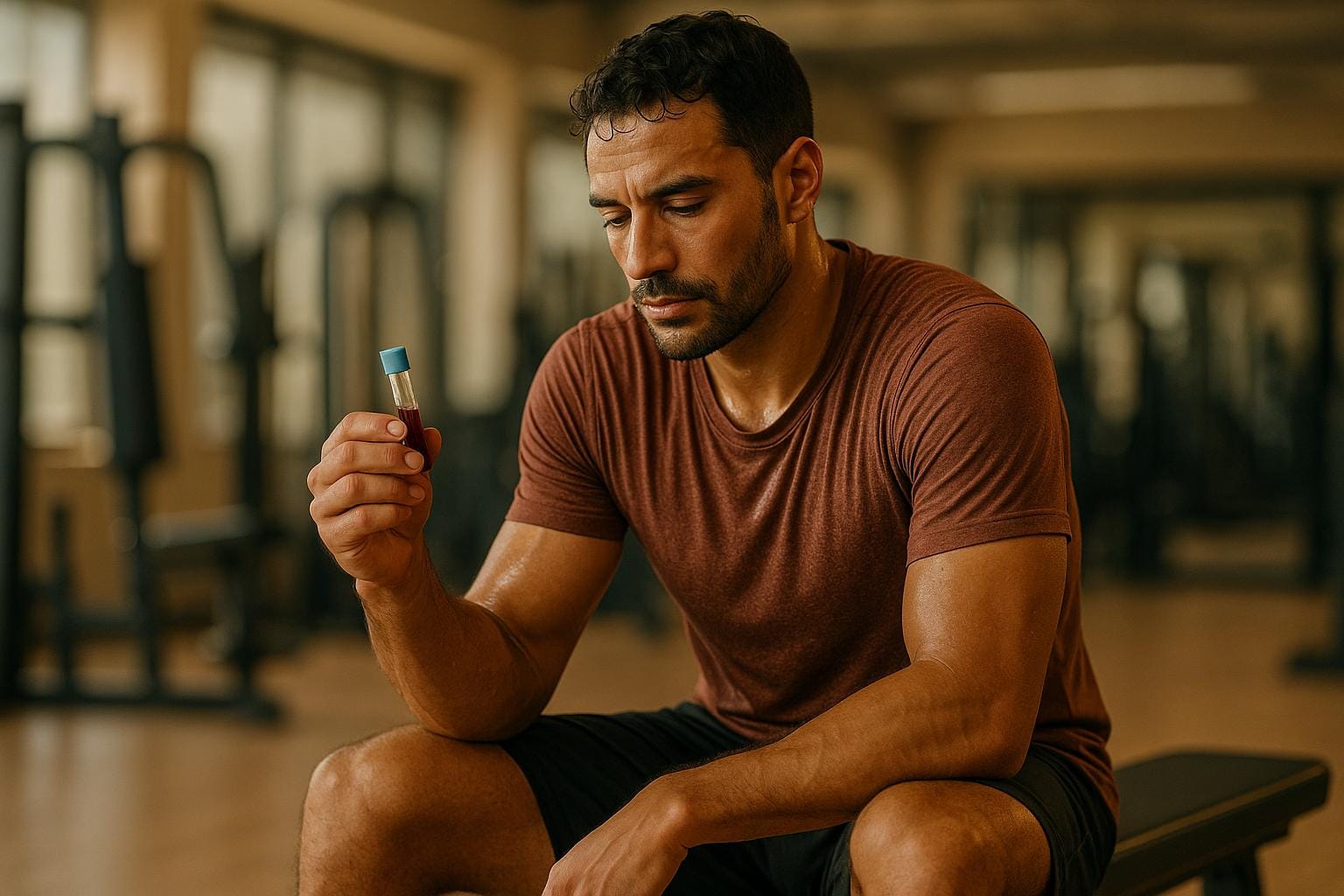Low-impact exercises are essential for keeping your joints healthy as you age. They reduce stress on your joints while improving flexibility, strength, and mobility. Here are the top exercises to consider:
- Walking: Gentle on joints, improves knee health, and reduces stiffness.
- Swimming: Buoyancy reduces joint strain, improves flexibility, and strengthens muscles.
- Cycling: Smooth motion lubricates joints and strengthens supporting muscles.
- Yoga: Boosts flexibility, strengthens muscles, and reduces joint pain.
- Tai Chi: Improves balance, joint stability, and reduces fall risk.
- Water Aerobics: Combines cardio and strength training with minimal joint stress.
- Dance: Enhances mobility, flexibility, and joint circulation through rhythmic movements.
Quick Comparison Table
| Exercise | Joint Impact | Flexibility | Strength | Cardiovascular Benefit | Equipment Needed |
|---|---|---|---|---|---|
| Walking | Low | Low | Moderate | Moderate | Comfortable shoes |
| Swimming | Minimal | High | High | High | Pool access |
| Cycling | Very Low | Moderate | Moderate | High | Bicycle |
| Yoga | Low | Very High | High | Low-Moderate | Yoga mat |
| Tai Chi | Very Low | High | Moderate | Low-Moderate | None |
| Water Aerobics | Minimal | Moderate | High | Moderate-High | Pool access |
| Dance | Low | Moderate | Moderate | Moderate | None |
Each of these exercises offers unique benefits for joint health. Choose one or mix them into your routine based on your goals and preferences. Always consult a healthcare professional before starting a new exercise program.
Low impact, high intensity cardio workout (for seniors and ALL ...
How Low-Impact Exercise Helps Your Joints
Low-impact exercise is a great way to keep your joints healthy without putting them at unnecessary risk. Here’s how it supports joint health:
Reduced Joint Stress
Low-impact exercises involve movements that are gentler on your body, like keeping at least one foot on the ground or using non-weight-bearing motions. This approach helps protect your joints by reducing excessive strain.
Improved Flexibility and Range of Motion
Doing these exercises regularly can boost your joint flexibility and strengthen the muscles that support them. This makes it easier to move without pain and helps prevent stiffness.
Prevention of Stiffness
Staying active with low-impact activities keeps your joints moving, which helps ward off stiffness. Incorporating different types of movement, like cross-training, can also reduce the risk of repetitive strain.
"One of the best ways to keep joints healthier is to exercise regularly and engage in daily activities like walking and stretching. Exercise increases the flexibility of joints and keeps muscles that support joints stronger."
- Guthrie
Pay attention to your body during exercise. Orthopedic surgeon Kenneth Schmidt, MD, advises:
"Exercise is not a no-pain, no-gain scenario... You may have some discomfort during exercise, but it shouldn't hurt. If it does, it's time to see your doctor."
To get the most out of low-impact exercise, focus on these three key types:
- Aerobic activities: Improve cardiovascular health while keeping your joints moving.
- Muscle strengthening: Build stronger muscles to better support your joints.
- Flexibility exercises: Maintain or even improve your joint range of motion.
These types of exercise work together to keep your joints in good shape.
1. Walking
Walking is an easy and effective way to keep your joints healthy after 40. Research highlights its benefits while being gentle on your joints. Here’s how walking supports joint health:
How Walking Helps Your Joints
Walking encourages natural joint movement and strengthens muscles in your legs and abdomen, which reduces joint stress. The motion also helps your knee cartilage by compressing and releasing it, circulating synovial fluid that delivers oxygen and nutrients to your joints.
Reduces Pain and Stiffness
Studies back up the pain-relieving benefits of walking. In one six-month study, arthritis sufferers saw a 25% drop in joint pain and a 16% reduction in stiffness through regular walking. For post-menopausal women, walking 30 minutes daily reduced the risk of hip fractures by 40%.
"It strengthens muscles, which helps shift pressure from joints and reduce pain. And a regular walking routine compresses and releases the cartilage in your knees, helping circulate synovial fluid that brings oxygen and nourishes your joints. When joints don't get this nourishment, they deteriorate faster."
– Mary Anne Dunkin
Tips for Joint-Friendly Walking
To get the most out of walking for your joints, keep these tips in mind:
- Wear the Right Shoes: Go for flat, flexible shoes that allow your feet to move naturally. Dr. Najia Shakoor explains, "Flat, flexible shoes provide the greatest degree of benefit in terms of knee loading".
- Focus on Form: Walk with your head up, shoulders relaxed, and arms swinging naturally. This helps distribute your weight evenly across your joints.
- Track Your Routine: Keep a log of your walks and note how you feel. This can help you figure out what works best for you.
Starting Your Routine
You don’t need to dive into long walks right away. A study in the American Journal of Preventive Medicine found that just one hour of brisk walking per week lowered the risk of mobility disability by 85% in seniors with osteoarthritis. Start small and gradually increase your pace and duration as you gain strength.
Also, remember to replace your walking shoes every 500 miles to maintain proper support. Shopping for shoes later in the day, when your feet are slightly larger, can help you find a better fit.
This article is for informational purposes only and is not intended as medical advice. Please consult a healthcare professional before starting any new fitness or wellness routine.
2. Swimming
Swimming is a fantastic low-impact activity that helps maintain joint health, especially as you age. Thanks to water's buoyancy, it reduces stress on your joints, making it an ideal exercise for people over 40.
How Swimming Supports Joint Health
Swimming offers several benefits for aging joints, including:
- Improved circulation: Helps reduce inflammation and discomfort.
- Increased flexibility: Enhances range of motion in stiff joints.
- Stronger muscles: Builds the muscles that support and stabilize your joints.
- Cardiovascular benefits: Provides heart-healthy exercise without the jarring impact of land-based activities.
"One of swimming's primary claims to being good for joint health is the fact that water reduces the effects of gravity. This makes it a non-weight-bearing activity. In the water, you're nearly weightless." – Elaine K Howley
Tips for Getting Started
Look for pools with water temperatures between 83°F and 90°F (28°C–32°C). Warm water not only soothes sore joints but also increases blood flow, delivering nutrients that help improve joint movement.
What You’ll Need
To make your swimming sessions more comfortable and safe, consider the following:
- Goggles: Protect your eyes while swimming.
- Pool shoes: Prevent slipping on wet surfaces.
- Flotation aids: Use pool noodles or kickboards for extra support.
- Water bottle: Stay hydrated, even during water-based workouts.
Safety Tips
- Drink water regularly, as it's easy to underestimate fluid loss in the pool.
- Stop immediately if you feel joint pain.
- Begin with shorter sessions and gradually extend your time in the water.
- If swimming laps feels uncomfortable, try alternatives like water walking or jogging.
The American Heart Association suggests aiming for 150 minutes of cardiovascular exercise per week. Following these tips can help you enjoy the benefits of swimming while keeping your joints safe and healthy.
This article is for informational purposes only and is not a substitute for professional medical advice. Always consult a healthcare provider before starting a new fitness routine.
3. Cycling
Cycling is a low-impact exercise that’s great for joint health, especially as you age. The continuous pedaling motion helps produce synovial fluid, which lubricates your joints and strengthens the surrounding muscles.
How It Helps Your Joints
Research from the Journal of Rheumatology shows that cycling can reduce joint pain, stiffness, and physical limitations in adults with osteoarthritis. Because it’s low-impact, it’s easier on weight-bearing joints like your hips, knees, and feet.
"Cycling is a low-impact exercise... This means that cycling limits impact stress on weight-bearing joints, like your hips, knees, and feet. Plus, the movement helps lubricate the joints, which reduces pain and stiffness."
- Lauren Shroyer, MS, senior director of product development at the American Council on Exercise
Picking the Right Bike
The type of bike you choose can make a big difference in comfort and joint protection. Here’s a quick guide:
| Bike Type | Best For | Features That Help |
|---|---|---|
| Comfort Bikes | Back/shoulder issues | High handlebars, upright posture |
| Recumbent Bikes | Balance concerns | Added stability, wider seats |
| E-Bikes | Hill assistance | Less joint strain on inclines |
| Hybrid Bikes | Upper body discomfort | Adjustable positioning |
The right bike ensures a safer, more comfortable ride.
Starting Safely
Protect your joints and get the most out of cycling with these tips:
- Begin with short 10-minute rides at a low resistance level.
- Get a professional bike fitting to ensure proper posture.
- Warm up with gentle range-of-motion exercises for 5–10 minutes before cycling.
- Take breaks or reduce intensity if your joints feel uncomfortable.
"Sharp changes in intensity can add stress to the patellofemoral joint [where your kneecap meets your thigh bone] and increase inflammation in the knee... Avoid abrupt intensity increases when climbing hills."
- Lauren Shroyer, MS, senior director of product development at the American Council on Exercise
Expert Opinion
Dr. Joseph Garry, former medical director of the Sports Medicine Clinic at the University of Minnesota, highlights that cycling’s smooth, repetitive motion helps lubricate joints, making daily movements easier. Studies also show that low-intensity cycling can improve joint function and reduce pain just as effectively as high-intensity workouts for those with knee osteoarthritis.
This article is for informational purposes only and is not intended as medical advice. Always consult a healthcare professional before starting a new fitness routine.
4. Yoga
Yoga is an excellent addition to activities like walking, swimming, and cycling for maintaining joint health after 40. Studies indicate that yoga can enhance joint flexibility and function while easing pain and stiffness in adults over 40. By combining movement and flexibility, yoga supports joint care effectively.
How Yoga Supports Joint Health
Yoga offers multiple benefits for your joints:
| Benefit | Impact on Joints |
|---|---|
| Increased Flexibility | Boosts mobility |
| Enhanced Strength | Strengthens muscles that stabilize and support joints |
| Improved Balance | Reduces fall risk by enhancing stability |
| Pain Relief | Alleviates discomfort and improves coping skills |
| Stress Reduction | May lower inflammation-related stress |
What the Research Says
One study found that practicing 90-minute sessions of modified Iyengar yoga weekly for eight weeks significantly reduced joint stiffness and improved functionality. Women with rheumatoid arthritis also reported improvements in their ability to perform daily tasks.
Yoga Styles That Support Joint Health
Some yoga styles are particularly suitable for those with joint concerns:
- Iyengar: Incorporates props for alignment and support
- Anusara: Focuses on proper body mechanics
- Kripalu: Encourages gentle, mindful movements
- Viniyoga: Adapts poses to individual needs
These styles cater to various levels of flexibility and joint health needs.
"Yoga is definitely one option for people with arthritis. Not only for the exercise benefits, but it's also beneficial in the mind/body area, promoting relaxation and stress reduction."
- Sharon Kolasinski, MD, Professor of Clinical Medicine and Rheumatologist at the University of Pennsylvania
Tips for Safe and Effective Practice
To maximize the benefits of yoga while protecting your joints:
- Pick a time of day when your joints feel most comfortable
- Begin with gentle poses and increase intensity gradually
- Use props like blocks or chairs for extra support
- Avoid poses that cause pain or discomfort
- Practice 1 to 6 times per week, with sessions lasting 45–90 minutes
"Make sure you listen to your body and honor that. Some days you may be able to do some physical postures, while others you'll need to do more gentle poses. And that's fine! The purpose of yoga is to listen to our bodies and become in tune with ourselves."
- Julie Cerrone, yoga instructor with psoriatic arthritis
Working with a knowledgeable instructor who understands joint-related concerns can help you modify poses as needed. Incorporating yoga into your routine could be a great way to support joint health and overall well-being.
This article is for informational purposes only and not intended as medical advice. Always consult a healthcare professional before starting any new fitness or wellness routine.
5. Tai Chi
Tai Chi supports joint health through its smooth, flowing movements performed in a semi-squat position. It's particularly effective for adults over 40, helping with balance, stability, and overall function. Here's what research says about its benefits.
How Tai Chi Helps with Joint Health and Balance
Studies highlight several advantages for those practicing Tai Chi:
| Benefit | Research Findings |
|---|---|
| Fall Prevention | Lowers the risk of falls by 26% compared to non-practitioners |
| Better Balance | Improves functional reach by an average of 2.69 inches |
| Increased Mobility | Significantly reduces time in the Timed Up and Go test |
| Stronger Legs | Builds leg muscle strength through controlled, deliberate movements |
Movements That Target Joint Health
Certain Tai Chi moves are especially helpful for enhancing joint stability and flexibility:
- Wave Hands Like Clouds
- Diagonal Flying
- Brush Knee and Twist Step
- Repulse Monkey
These movements involve gradual loading of the joints, which helps improve their health over time.
What the Research Says
A 2012 study published in the New England Journal of Medicine demonstrated Tai Chi's benefits for postural stability. The study included 195 participants split into three groups. Those practicing Tai Chi showed significantly better balance compared to participants in resistance training and stretching groups.
Safety Tips for Practicing Tai Chi
- Start with shorter sessions and slowly increase the duration.
- Learn from a qualified instructor.
- Pause between movements to avoid knee strain.
- Perform shoulder movements slowly to prevent overexertion.
- Adjust movements to suit your comfort level.
"Safeguarding students from injuries is crucial for effective teaching and enhances the overall experience for both students and teachers." - Dr. Paul Lam, Tai Chi Expert
Yang-style Tai Chi has been shown to be particularly effective for improving balance and reducing the risk of falls. Following these safety guidelines can help you enjoy the benefits of Tai Chi while minimizing the risk of injury. It’s a great complement to other joint-friendly exercises discussed earlier.
This article is for informational purposes only and does not replace professional medical advice. Always consult a healthcare provider before starting a new fitness or wellness program.
6. Water Aerobics
Water aerobics blends cardio and strength training while being gentle on your joints. When you're submerged up to your neck, about 90% of your body weight is offset, significantly easing joint stress.
How It Helps Your Joints
| Benefit | Effect on Joints |
|---|---|
| Buoyancy Support | Relieves up to 90% of weight-bearing stress |
| Resistance Training | Strengthens muscles without heavy weights |
| Pain Relief | Eases arthritis symptoms and joint discomfort |
| Calorie Burn | Burns up to 800 calories per session while protecting joints |
Best Water Exercises for Joint Support
These water-based movements are designed to improve joint mobility and build strength:
Aqua Walking: Walk in the shallow end, focusing on pressing your heels into the pool floor. Start with 5–10 minutes at a steady pace.
Standing Water Push-ups: Face the pool wall and place your hands slightly wider than shoulder-width apart. Perform slow, controlled push-ups without locking your elbows. Aim for 10 reps per set.
Leg Movement Series: Hold onto the pool's edge for balance and try these moves:
- Side leg lifts
- Forward leg swings
- Cross-body movements
Do 10 repetitions for each leg.
Incorporating these exercises into your routine can help strengthen joints while keeping workouts safe and effective.
Staying Safe While Exercising
"Instead of landing on a hard surface with the impact of your full weight, you land with only 10% of your body weight. This reduces risk of injury." - Darcy Reber, APRN, C.N.P., D.N.P.
To get the most out of water aerobics while staying safe:
- Exercise with a partner for added safety
- Start with shorter sessions and gradually increase duration as your body adjusts
- Focus on maintaining proper form during all movements
If you're new to water aerobics, ease into it slowly. Let the natural resistance of the water help you build strength and endurance without putting extra strain on your joints.
This article is for informational purposes only and does not replace medical advice. Always consult a healthcare professional before starting a new fitness routine.
7. Dance
Dance is a fun, low-impact way to care for your joints while boosting cardiovascular health. Many dance styles involve smooth, gentle movements that enhance joint mobility and flexibility without putting too much strain on them. Below, you'll find the best dance styles for joint health, their benefits, and tips for safely incorporating dance into your routine.
Best Dance Styles for Joint Health
| Dance Style | Benefits for Joints | Intensity Level |
|---|---|---|
| Waltz | Improves flexibility in hips and knees | Very Low |
| Foxtrot | Enhances posture and alignment | Low |
| Rumba | Eases tension in shoulders and neck | Low-Moderate |
| Zumba Gold | Promotes full-body mobility with gentle moves | Moderate |
How Dance Helps Your Joints
Dancing supports joint health by improving circulation and naturally lubricating the joints. The flowing, rhythmic movements also help strengthen the muscles and ligaments that support your joints, making them more stable and resilient.
Real-Life Example
Julia, a woman in her late 60s dealing with knee osteoarthritis, discovered ballroom dancing as a way to ease her discomfort. Starting with simple waltz steps, she eventually worked up to more complex routines. Over time, she noticed better flexibility and less pain.
Tips for Safe Dancing
To keep your joints safe while dancing:
- Start Simple: Begin with slower, controlled styles like the waltz or foxtrot.
- Prioritize Technique: A qualified instructor can help you master proper form.
- Pay Attention to Pain: Stop or modify movements if you feel any joint discomfort.
Try 20-30 minute sessions twice a week, then gradually increase as your joints become stronger.
Modifications for Comfort
If you need to adjust your movements for joint comfort:
- Use smaller, more controlled motions.
- Avoid deep knee bends.
- Use a chair for stability during standing exercises.
- Focus on upper body movements while seated, if necessary.
Dance, like walking or water aerobics, is a gentle and enjoyable way to maintain joint flexibility and reduce discomfort.
This article is for informational purposes only and does not replace medical advice. Always consult a healthcare professional before starting a new fitness routine.
Exercise Comparison Chart for Joint Health
Here’s a quick reference chart summarizing exercises that are gentle on the joints, especially for those over 40.
Detailed Exercise Comparison Table
| Exercise Type | Joint Impact Level | Cardiovascular Benefit | Flexibility Improvement | Accessibility | Equipment Required | Best For |
|---|---|---|---|---|---|---|
| Swimming | Minimal | High | High | Moderate | Pool access | Full-body workout with low joint stress |
| Walking | Low | Moderate | Low | High | Comfortable shoes | Bone health |
| Cycling | Very Low | High | Moderate | High | Bicycle or stationary bike | Cardiovascular fitness |
| Yoga | Low | Low-Moderate | Very High | High | Yoga mat | Flexibility and strength |
| Tai Chi | Very Low | Low-Moderate | High | High | None | Balance and joint mobility |
| Water Aerobics | Minimal | Moderate-High | Moderate | Moderate | Pool access | Great for severe joint pain |
This table highlights the benefits and requirements of each exercise, making it easier to choose activities that align with your joint health goals.
Choosing the Right Exercise
The World Health Organization suggests 150–300 minutes of moderate aerobic activity weekly. Use the chart to guide your choices:
- Swimming and water aerobics are perfect for reducing joint strain due to water's buoyancy.
- Cycling and swimming offer excellent cardio benefits while being gentle on joints.
- Walking supports bone health and helps in preventing osteoporosis.
Expert Insight
Dr. Kenneth Schmidt emphasizes that exercise should never cause pain.
Intensity Guidelines
- Beginner: 20–30 minutes, 2–3 times per week
- Intermediate: 30–45 minutes, 3–4 times per week
- Advanced: 45–60 minutes, 4–5 times per week
Note: This content is for informational purposes only. Always consult a healthcare professional before starting a new fitness routine.
Safety Guidelines for Low-Impact Exercise
Protecting your joints while staying active requires not just choosing the right exercises but also following key safety practices.
Focus on Proper Form
Using the right technique is crucial to avoid unnecessary joint strain. As Dr. James Holstine, an orthopedic surgeon at PeaceHealth, explains:
"Physical activity is essential for overall health. And that means protecting your joints is vital."
Here are a few tips to keep your form in check:
- Keep your bent knee aligned with your toes during lunges or stretches.
- Engage your core to avoid overextending your back.
- Start with simple movements and progress gradually.
- Consider working with a certified trainer to master the basics.
Warm-Up Matters
A proper warm-up helps prepare your joints and muscles for exercise. Try these simple activities:
- Light walking or marching in place.
- Joint mobility exercises like arm circles, ankle rolls, or hip rotations.
- Dynamic stretches such as leg swings, torso twists, or shoulder rolls.
Stay Hydrated
Aim to drink 8–10 glasses of water daily, but adjust based on your activity level and the weather. If you're unsure about your hydration needs, consult a professional for personalized advice.
Know When to Seek Help
If you're new to exercise, managing joint issues, recovering from an injury, or uncertain about your form, consulting a physical therapist or trainer can make a big difference.
This article is for informational purposes only and does not substitute professional medical advice. Always consult a healthcare provider before starting a new fitness or wellness routine.
Conclusion
Low-impact exercise plays a key role in keeping joints healthy and maintaining independence as you age. Through a process called elastic-hydrodynamic nutrition, movement helps nourish joint cartilage and supports overall joint health.
The research is clear: regular movement can reduce inflammation, strengthen muscles that support the joints, and improve flexibility. A 2023 study even found that exercise directly impacts the immune system, helping to lower inflammation - a major factor in joint issues.
Dr. Kenneth Schmidt, MD, emphasizes that while some discomfort during exercise is normal, persistent pain is not. If you experience ongoing discomfort, it’s important to consult a healthcare professional. Exercise should challenge you, but it should never cause pain.
Incorporating a mix of low-impact activities like walking, swimming, yoga, or tai chi into your daily routine can have lasting benefits for your joints. Consistency is key. These exercises reduce inflammation, build muscle strength, and maintain flexibility, all of which contribute to long-term joint health.
For the best results, aim for a variety of low-impact exercises that address flexibility, strength, and endurance. This balanced approach helps avoid overuse injuries while providing well-rounded joint care.
This article is for informational purposes only and does not replace professional medical advice. Always consult a healthcare provider before starting a new fitness or wellness routine.
FAQs
What are the best low-impact exercises to support joint health for people over 40?
If you're over 40 and looking to protect your joints while staying active, low-impact exercises are a great choice. Activities like walking, swimming, water aerobics, cycling (including stationary or recumbent bikes), yoga, and Tai Chi are excellent options. These exercises are gentle on your joints, help reduce stiffness, improve mobility, and strengthen the muscles around your joints.
Incorporating these exercises into your routine can also boost cardiovascular health and overall well-being. Start slow, listen to your body, and consider consulting your doctor before beginning a new exercise program to ensure it’s right for your specific needs.
What’s the best way to start a low-impact exercise routine if I’m over 40 and new to fitness?
Starting a low-impact exercise routine is a great way to support your joint health, especially if you're over 40 and new to fitness. Begin by choosing activities that are gentle on your joints, such as walking, swimming, yoga, or cycling. These exercises are easy to adapt to your fitness level and can help improve mobility while reducing stiffness.
Start slow and aim for short sessions, like 10–15 minutes a day, gradually increasing the duration as you build strength and confidence. Focus on consistency rather than intensity, and listen to your body - stop if you feel any discomfort. Incorporating these exercises into your daily routine can make a big difference in maintaining healthy joints over time.
How can exercises like yoga or tai chi be adapted to better support joint health?
Yoga and tai chi can be excellent for joint health when tailored to your needs. To make these exercises more joint-friendly, focus on gentle movements and avoid positions that cause discomfort or strain. For yoga, opt for poses like child's pose or cat-cow stretches, which are easier on the joints. You can also use props like yoga blocks or straps to modify poses and reduce pressure on sensitive areas.
In tai chi, prioritize slow, flowing movements and maintain a comfortable range of motion. Pay attention to proper posture and alignment to avoid unnecessary stress on your joints. Always listen to your body and consult a fitness professional or physical therapist if you're unsure how to adapt these exercises for your specific needs.


